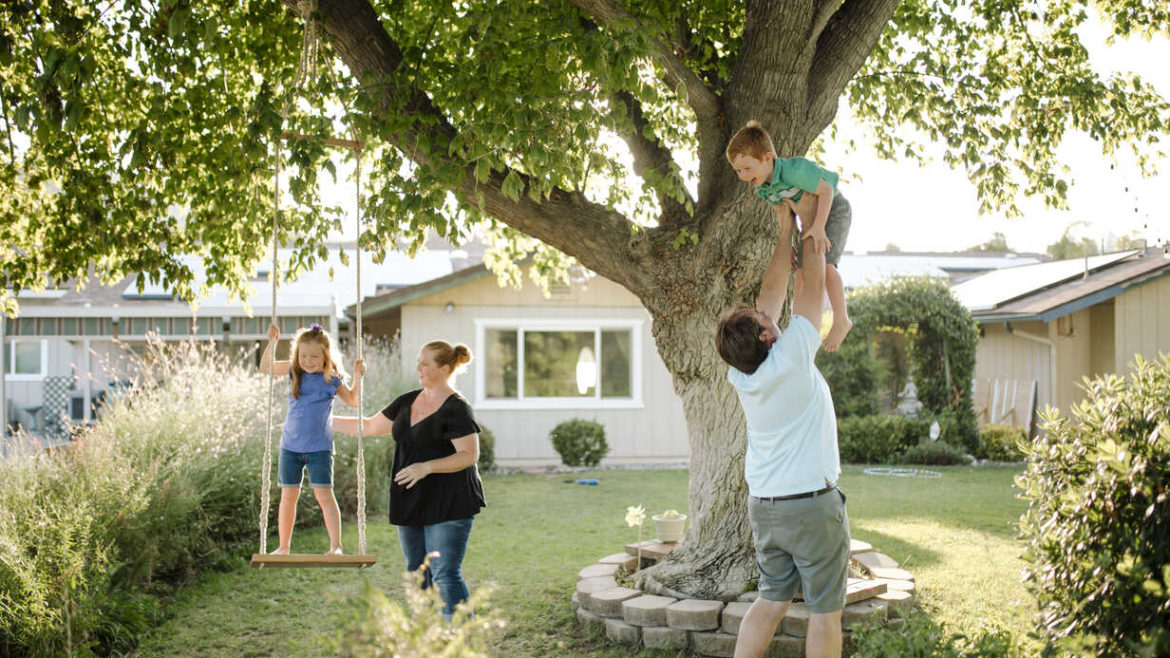Key Takeaways
- Prevent Costly Repairs by Tackling Fall Maintenance Now: Regular fall maintenance tasks like cleaning gutters, sealing drafts, and inspecting your heating system can prevent major issues, saving you from expensive repairs down the road.
- Improve Energy Efficiency: Sealing windows, checking insulation, and maintaining your heating system can reduce energy costs, keeping your home warmer during the cold months while lowering utility bills.
- Protect Your Home from Winter Weather: Prune overhanging branches, fix driveway cracks, and repair exterior paint to protect your home from the harsh effects of winter storms, ensuring it remains safe and in good condition all season.
Fall is on the way and with it comes the perfect opportunity to get your home ready for the winter months ahead. Taking care of these maintenance tasks now can save you money, prevent costly repairs, and keep your home running smoothly all winter long.
Whether you’re a seasoned homeowner or new to homeownership, this fall maintenance checklist is designed to make managing all your fall home maintenance simple and easy, while making sure nothing gets overlooked.
1. Inspect and Clean Gutters and Downspouts
As the leaves start falling, they tend to find their way into your gutters, and while those autumn colors are beautiful, clogged downspouts are not. This is one of those maintenance tasks that can save you from major headaches later on.
- Why It Matters: Clogged gutters can lead to water damage in your home’s roof, siding, and even foundation. When water overflows from blocked downspouts, it can pool around your foundation, increasing the risk of leaks, erosion, and costly repairs. In the winter, water trapped in gutters can freeze, creating ice dams that can damage your roof.
- What to Do: Get up on that ladder (or hire someone if you’re uncomfortable doing it yourself) and clean out all the leaves, sticks, and debris from your gutters and downspouts. Make sure water flows freely to prevent backup. While you’re at it, check for any loose or damaged sections of gutter and repair them as needed.
- Pro Tip: Consider installing gutter guards to keep debris out and reduce the frequency of gutter cleaning. It’s a small investment that can save you time and hassle down the road.
2. Seal Drafts and Check Insulation
Feeling small drafts sneaking in around your windows or doors? It’s time to seal things up before winter sets in. Not only will sealing drafts keep you warmer, but it will also help reduce your energy bills—who doesn’t love that?
- Why It Matters: Drafty windows and doors let cold air in and warm air out, which forces your heating system to work overtime. This can lead to higher energy bills and a less comfortable home. Proper insulation is crucial for keeping the warm air in and preventing your pipes from freezing when temperatures drop.
- What to Do: Check around your windows and doors for drafts by running your hand along the edges to feel for cold air. Apply weather stripping or caulking where needed to seal any gaps. Don’t forget to check other areas where drafts might sneak in, like your attic, basement, and around electrical outlets on exterior walls. Also, take a look at your attic insulation. If it’s looking thin, consider adding more to keep your home warmer this winter.
- Pro Tip: Consider upgrading to energy-efficient windows if yours are older or particularly drafty. They’re an investment upfront but can significantly reduce heating (and cooling) costs in the long run.
3. Service your Heating System
Your heating system is about to become your home’s MVP, so now’s the time to make sure it’s in good working order. Regular maintenance can keep it running efficiently, extend its life, and help you avoid emergency repair calls on cold nights.
- Why It Matters: A well-maintained heating system operates more efficiently, meaning it uses less energy to heat your home, which saves you money. Regular checkups also help identify potential issues early, so you can avoid expensive repairs or, even worse, system failures in the middle of winter.
- What to Do: Schedule a professional tune-up for your furnace or boiler before the cold sets in. The technician will clean the system, check for leaks or worn parts, and make sure everything is functioning as it should. If you have a fireplace or wood stove, now is the time to get the chimney inspected and cleaned to prevent creosote buildup, which can be a fire hazard.
- Pro Tip: Change your HVAC filters regularly, especially during the heating season. Dirty filters reduce airflow and make your system work harder than it needs to, which increases your energy usage and wears down the system faster.
4. Test Smoke and Carbon Monoxide Detectors
As we rely more on heating systems, fireplaces, and space heaters during the colder months, it’s more important than ever to ensure your smoke and carbon monoxide detectors are working properly. These little devices are life-savers—literally.
- Why It Matters: Smoke and carbon monoxide detectors provide early warnings of danger, allowing you and your family to get to safety in case of a fire or carbon monoxide leak. Faulty heating equipment is a leading cause of both house fires and carbon monoxide poisoning during the winter.
- What to Do: Test each detector by pressing the test button. Replace any batteries that are running low, and if your detectors are over 10 years old, it’s time to replace them entirely. Make sure you have detectors installed near bedrooms, on every level of your home, and close to potential sources of carbon monoxide, like furnaces and fireplaces.
- Pro Tip: Consider upgrading to smart smoke and carbon monoxide detectors. These devices send alerts to your phone if they detect a problem, even when you’re not home.
5. Inspect Fire Extinguishers
With the increased use of fireplaces, space heaters, and holiday cooking, it’s a good time to ensure your fire extinguishers are ready for action—just in case.
- Why It Matters: Having a fire extinguisher on hand can prevent a small fire from becoming a big disaster. But only if it’s charged and easily accessible when you need it most.
- What to Do: Check that each fire extinguisher in your home is fully charged and hasn’t expired. Make sure you have extinguishers in key areas like the kitchen, garage, and near fireplaces. If your extinguisher is expired or damaged, replace it.
- Pro Tip: If you don’t have fire extinguishers in your home, now’s the time to invest in a few. It’s a small purchase that can make a huge difference in an emergency.
6. Flush your Hot Water Heater
Sediment buildup in your water heater can reduce its efficiency and shorten its lifespan. Flushing your water heater is a simple way to keep it running smoothly and ensure you have hot water all winter long.
- Why It Matters: When sediment builds up in the bottom of your water heater, it reduces its ability to heat water efficiently, leading to higher energy bills and less hot water for your home.
- What to Do: To flush your water heater, turn off the power or gas supply, attach a hose to the drain valve, and let the water run out until it’s clear of sediment. If you’re not comfortable doing this yourself, call in a professional to handle it for you.
- Pro Tip: Consider installing a water heater blanket to help insulate your unit and reduce energy usage, especially if it’s located in a cold area like the garage or basement.
7. Repair Walkways and Driveways
Small cracks in your walkways or driveway might not seem like a big deal now, but they can quickly worsen in the winter when water gets into the cracks, freezes, and expands. Fall is the best time to fix these issues before they become more serious.
- Why It Matters: Preventative maintenance now can save you from more extensive (and expensive) repairs in the spring. Plus, repairing cracks reduces tripping hazards when those surfaces are covered in snow or ice.
- What to Do: Inspect your walkways and driveway for cracks or uneven surfaces. Use concrete or asphalt patching products to repair cracks before the cold weather sets in.
- Pro Tip: After repairs, consider sealing your driveway to protect it from winter weather and extend its life.
8. Fix Holes and Tears in Window Screens
Your window screens might not get much use during the colder months, but now’s the perfect time to repair any damage before winter weather sets in.
- Why It Matters: Damaged screens not only let in insects during warmer months but can also allow small critters looking for warmth to sneak into your home during winter. Plus, taking care of them now means one less thing to worry about when spring arrives.
- What to Do: Inspect your window screens for holes, tears, or loose frames. Use a screen repair kit to patch small holes, or replace the screen entirely if needed.
- Pro Tip: Store removable screens in a safe place during the winter months to prolong their lifespan and prevent damage from snow and ice.
9. Fertilize your Lawn and Shrubs
Even though your lawn and plants are heading into dormancy for the winter, giving them some attention now can help them come back strong in the spring.
- Why It Matters: Fertilizing in the fall helps your lawn and shrubs develop strong root systems that will help them bounce back quickly once warmer weather returns. It also helps prevent winter damage to your grass and plants.
- What to Do: Apply a fall fertilizer that’s high in phosphorus to encourage root growth. Be sure to fertilize before the ground freezes so your lawn and shrubs can absorb the nutrients.
- Pro Tip: Consider aerating your lawn before applying fertilizer. This will help the nutrients reach deeper into the soil and promote healthier growth in the spring.
10. Prep your Grill for Winter
If your grill has been your go-to for summer cookouts, now’s the time to clean and store it properly for the winter so it’s ready to go when grilling season comes back around.
- Why It Matters: Cleaning and winterizing your grill extends its life and ensures it will be ready to use when warmer weather returns. Plus, it prevents grease and food buildup from attracting unwanted pests.
- What to Do: Give your grill a thorough cleaning, making sure to remove grease, food debris, and ash from the grates and interior. Disconnect and store propane tanks in a cool, dry place, and cover your grill to protect it from the elements.
- Pro Tip: Consider moving your grill to a covered area, like a garage or shed, to provide extra protection from snow and ice during the winter months.
11. Touch up Exterior Paint
Before winter weather has a chance to take its toll, inspect your home’s exterior paint for any areas that need attention. Chipped or peeling paint can allow moisture into the wood, leading to rot and other damage.
- Why It Matters: Touching up paint helps protect your home’s exterior from moisture, ice, and snow. Plus, it keeps your home looking sharp and helps maintain curb appeal.
- What to Do: Walk around your home and look for areas where paint is chipped, peeling, or faded. Scrape off any loose paint and apply a fresh coat to seal and protect the exposed wood or siding.
- Pro Tip: Use a high-quality exterior paint designed to withstand harsh weather conditions. If you live in an area with extreme cold or snow, consider using paint with added protection against moisture.
12. Trim Trees and Landscaping
Winter storms can bring heavy snow and ice, which can weigh down tree branches and cause them to snap. Trimming your trees and landscaping in the fall can help prevent damage to your home during winter weather.
- Why It Matters: Overhanging branches can cause serious damage to your roof, windows, or siding if they break during a storm. Removing dead or weak branches now reduces the risk of damage and keeps your landscaping healthy.
- What to Do: Trim back any branches close to your home or appear dead or weakened. If you’re dealing with large trees, consider hiring a professional arborist to ensure the job is done safely.
- Pro Tip: Don’t forget to clean up any fallen leaves from your yard, especially on walkways and driveways, to prevent them from becoming slippery hazards as temperatures drop.
Wrapping Up
Taking care of these fall maintenance tasks now will help you avoid costly repairs, keep your home comfortable, and ensure everything runs smoothly through the winter months. From cleaning gutters and sealing drafts to fertilizing your lawn and prepping your grill, each of these tasks plays a vital role in protecting your home and getting it ready for the cold weather ahead.
We designed this article to be as comprehensive as possible. Let us know if we missed anything on your fall maintenance to-do list in the comments!
.

Smart Ways to Save Money on a Tight Budget
Read more...






